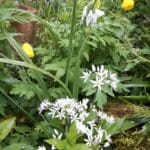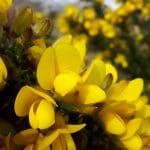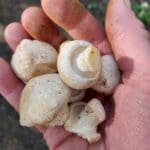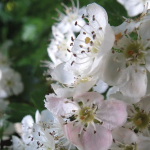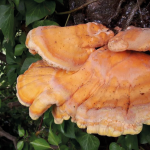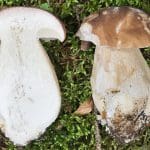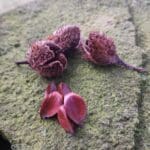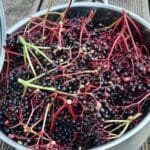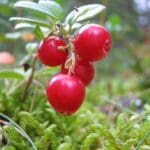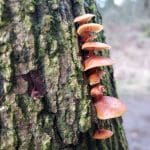Foraging is a great way to slow down, explore the outdoors, and make the most of what nature has to offer—right on your doorstep. Across the UK, there’s something to find in every season, whether it’s the zingy green shoots of spring, juicy summer berries, or earthy autumn mushrooms. This guide takes you through the year, month by month, showing you what to look for, where to find it, and how to enjoy it safely and sustainably.
Foraging in January
Christmas is over, you’ve already broken your new year’s resolution and the weather’s foul but believe it or not there’s still plenty to be foraging in January. Make the most of those brief breaks in the rain and burn off some of that Christmas dinner.
Oyster Mushrooms
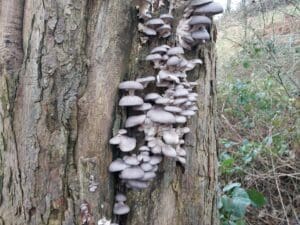
A mushroom that’s common and can be found all year around. It is dead easy to ID and usually grows in large, overlapping clusters. You’ll find them growing on dead or decaying broad leaved trees and stumps and they are a great meat substitute.
Click here for the ID guide for Oyster mushrooms.
Three-cornered leek
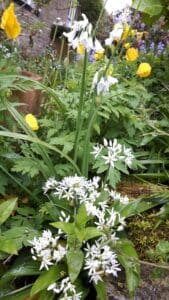
One of the first plants to emerge and to look out for, it’s a non-native invasive species that can be used as a substitute for spring onions. The leaves have 3 sides hence the common name and it is normally found in damp environments at the sides of ponds and rivers.
Click here for the ID guide for Three-cornered leeks
Dandelion root

Winter is the best time to harvest the roots of Dandelion, the plant uses the root to store carbohydrates over winter. As long as the ground isn’t frozen solid they are pretty easy to remove but remember to seek the landowners permission beforehand.
Click here for the ID guide for Dandelion
Spruce needles
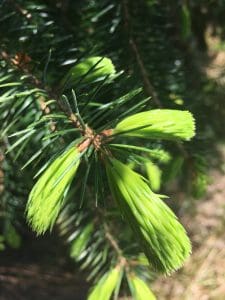
Yes you can eat your Christmas tree but the flavour comes from volatile oils that have most likely evaporated by now so go out into the wild and harvest some fresh ones. Conifers are an underused resource that are available all year round and safe once you can identify a Yew tree.
Click here for the ID guide for Spruce.
Bittercress
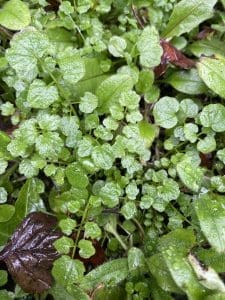
A tiny plant that packs a punch, you’ll find them everywhere including your back garden. Use it as you would rocket or watercress for a spicy, mustardy kick.
Click here for the ID guide for Bittercress.
For more information about foraging in January click here.
Foraging in February
When we’re Foraging in February the weather tends to still be cold and there’s still the risk of snow and frost but on the odd days when the sun does shine it gives me hope that spring is just around the corner.
Scarlet elf cups
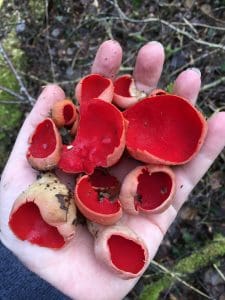
A lovely late winter mushroom that’s easy to ID, something we often find when foraging in February their only lookalike is the Ruby Elf cup that’s also edible. They get their common name as they were supposedly used by elfs as drinking vessels and I like to follow this tradition by filling them with birch sap. They hold their bright red colour throughout cooking so are great for brightening up dishes. Look for them growing on damp, decaying hardwoods, if you find a good patch they can appear in their hundreds.
Click here for the ID guide to Scarlet elf cups.
Chickweed
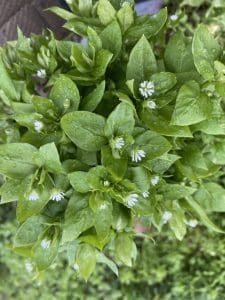
A plant that’s available most of the year but perhaps at its best in late winter/early spring. It can be eaten raw or cooked and has a mild lettuce type flavour. Most people will have chickweed growing in their gardens so rather than composting it, use it for its cleansing and healing properties and it’s also packed full of vitamins and minerals. The key feature to look for is the ‘mohican’ of fine hairs running down the stems which distinguishes it from any lookalikes.
Click here for the ID guide to Chickweed.
Nettles

Again a plant that’s available most of the year but at its best now. The leaves are packed full of iron and Vitamin A and D use them as a spinach alternative or to make a tea which is an amazing winter tonic.
Click here for the ID guide to Nettles.
Wild garlic

The first shoots of wild garlic normally appear in February, it’s a plant that seems to get more and more popular each year. The strong scent is a key feature, you can normally smell it before seeing it. Look for it in ancient woodlands, river banks and hedgerows, but remember to leave the bulbs in the ground and only take what you need.
Click here for the ID guide to Wild Garlic.
Lesser Celandine
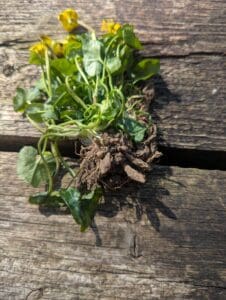
A plant that’s not really used much now but one that would have been vitally important to our ancestors as the cooked roots were an important source of carbohydrates. These knobby tubers are said to resemble piles, and according to the doctrine of signatures this resemblance suggests that it could be used to cure piles. It is often known as Pilewort. The flowers which emerge towards the end of the month are seen as one of the harbingers of spring.
Click here for the ID guide to Lesser Celandine.
For more information about foraging in February click here.
Foraging in March
We’re Foraging in March, the weather is slowly warming up and flowers are starting to bloom but the weather can vary across the country and further north there’s still a risk of snow. The Anglo-Saxon name for the month was Hlyd monath meaning stormy month. If the weather is terrible take some solace in this old saying ‘March winds and April showers, bring forth May flowers.’
Birch sap
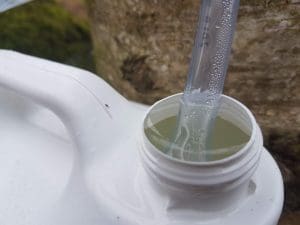
One of my all time favourite wild ingredients, that’s only available for a short window(typically the last 2 weeks of March into April) Birch trees store their energy in the form of sap over winter and as the temperature rises and the tree gets ready to produce new growth the sap makes it way from the roots up to the new shoots. The sap can be drunk straight from the tree, it contains betulinic and salicylic acids and is a great tonic or you can boil the sap down and turn it into Birch Sap syrup which in my opinion is even better than Maple syrup. Read more about harvesting birch sap here.
Click here for the ID guide for Birch.
Gorse
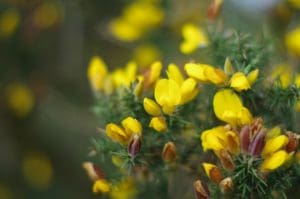
A common plant/shrub that you typically find on coastal cliffs and moors, it can flower at any time of the year. When there’s not much other colour around these flowers are great added to salads and desserts and have a mild pea flavour. Just watch out for the long, sharp thorns!
Click here for the ID guide for Gorse.
Hawthorn leaves

The leaves of Hawthorn are at their best in March before they’ve toughened up and become bitter. Add them to salads or gently wilt them like spinach. Traditionally the leaves and young buds were known as bread and cheese, they don’t really taste of either they have more of a mild nutty flavour.
Click here for the ID guide for Hawthorn.
Cleavers

Sticky weed, sticky willy, goosegrass or cleavers is a plant with lots of common names and one that most people are familiar with. It’s related to coffee and the seeds later in the year do make a good coffee alternative but March is a good time to gather the young shoots before they’ve developed their ‘sticky’ hairs. It can be eaten raw or gently steamed and has a mild cucumber flavour.
Click here for the ID guide for Cleavers.
Glistening Inkcap
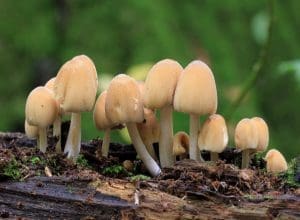
A fairly common species that gets its name from the fine ‘mica’ coating on the caps, this coating gives it a ‘glittery’ appearance. They can look very similar to the Common Inkcap which is toxic so only harvest specimens where the coating is obvious. They can be cooked but tend to disappear to nothing. I salt them and use them as a squid ink replacement to make risotto and pasta dishes.
Click here for the ID guide for Glistening Inkcap.
For more information about foraging in March click here.
Foraging in April
Foraging in April, it’s one of my favourite months to forage, the warming temperatures make everything burst to life. It’s the month for fresh spring greens and herbs but there are also a few gourmet mushrooms too.
St. George’s Mushroom
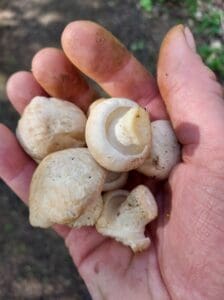
One of my favourite mushrooms and they come at a great time when my dried mushrooms collected in Autumn are starting to get low. It gets its common name as it typically appears 2 weeks either side of St. George’s day which is the 23rd of the month.
They typically appear in grasslands and woodland edges, growing in fairy rings. They have a strong mealy aroma which is a key feature that distinguishes them from any lookalikes.
Click here for the ID guide for the St. George’s Mushroom.
Lime
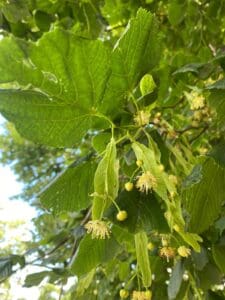
Depending on where you are in the country, there are a few different uses for Lime this month, up in the North where it is a bit colder the leaves are perfect right now. They have a lovely citrus taste and are an amazing addition to a salad.
Further south the leaves may be past their best and you may find the tree in flower. The flowers have a lovely honey-like aroma and are most often used to make Linden tea.
Click here for the ID guide for Lime.
Alexanders
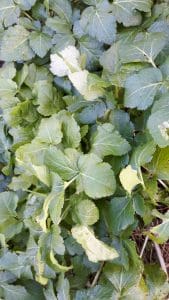
The first flower buds are normally available from late March through April. My favourite way to use them is to tempura them and serve them with a spicy relish. Alexanders are fairly common in coastal areas but they were cultivated in the past so they appear inland too.
Click here for the ID guide for Alexanders.
Bistort
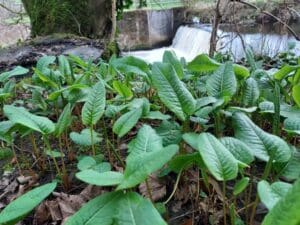
An underused plant in modern times, it prefers damp, shady environments and is fairly distinctive. All parts of the plant are edible but April is the best time to gather the young, tender leaves.
Click here for the ID guide for Bistort.
Bramble shoots

Brambles or blackberries are a bit of a gateway drug to foraging. They are one of the few plants people still commonly gather from the wild and most of us spent our childhoods gathering them but did you know the young tender stems can be used as an asparagus alternative? You need to catch them while they are still young and before the thorns have developed.
Click here for the ID guide for Blackberry.
For more information about foraging in April click here.
Foraging in May
Mayday traditionally marks the beginning of summer and May can often be one of the warmest and driest months of the year, foraging in May can be fruitful. Spring greens are still out in force and the warmer weather means the next wave of edibles is just beginning.
Hawthorn
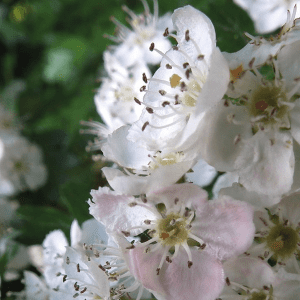
In May the hawthorn bushes are in full bloom. Their flowers are a signature of May and their thorny branches feature in May Day traditions all over the UK. The flowers have an amazing almondy flavour and are great added to salads, used in deserts or infused in alcohol.
Click here for the ID guide for Hawthorn.
Fairy ring champignons

A lovely late spring, early summer time mushroom, They get their common name as they grow in rings. The rings can vary greatly in size depending on the age of the parent mycelium.
The mushrooms contain high levels of sugar called trehalose, which prevents cell damage when the mushrooms become extremely dry. So even if the weather does get hot they still tend to be in a good condition.
Click here for the ID guide for Fairy Ring Champignons.
Ox-eye daisy
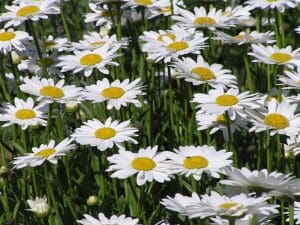
I think this is one of the best tasting flowering plants, the flowers and leaves are both edible and delicious.
I pickle the unopened flower buds and use them as a caper alternative.
When the flower buds have fully opened they are lovely dipped in a tempura batter and deep fried or they can be simply tossed through a fresh salad.
The young leaves have a strong herbal flavour when raw and I add them finely chopped to salads; they can also be cooked in a similar way to spinach.
Click here for the ID guide for Ox Eye Daisy
Irish sea moss or Carrageen

Carrageen is an increasingly popular seaweed due to its immune boosting properties, it can be found along most of the British coastline and it’s easy to ID. It’s a seaweed that most of us will have eaten perhaps unknowingly as it’s used a lot as a vegan thickener or stabiliser and appears in vegan milks, toothpaste and beers.
Click here for the ID guide for Carrageenan.
Ladies Smock
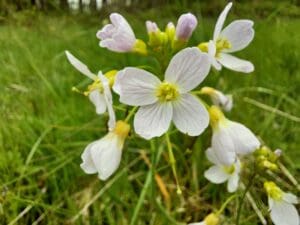
A common member of the Cabbage family is at its best in spring. The flowers and leaves have a spicy, horseradish type flavour that works well in a variety of dishes. Normally found in meadows, where it gets established it can become hyper abundant.
Click here for the ID guide for Ladies Smock.
For more information about foraging in May click here.
Foraging in June
Foraging in June can be really variable weather-wise, one day it’s hot and humid and the next day it’s damp and miserable. The summer solstice is towards the end of the month when the sun reaches its highest point, it’s an important time in the foraging calendar.
Elderflower
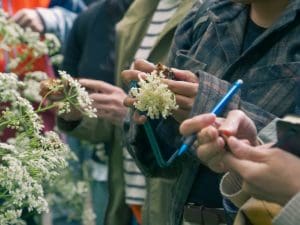
Grab them while you can! The season can be short for elderflowers but they dry really well or you can preserve them in a variety of different ways. Elder is a common and easy to ID tree/shrub that many people have growing in their gardens.
Click here for the ID guide for Elder.
Marsh Samphire
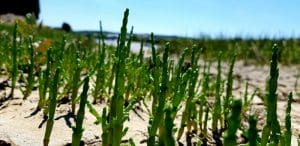
Becoming quite trendy over the last few years, it’s an easy and common plant in estuaries and tidal bays. It can be eaten raw or cooked and has an incredible salty flavour.
Click here for the ID guide for March Samphire.
Rose
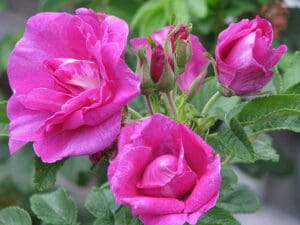
Rose bushes up and down the land fill with blooms at this time of the year. It’s a plant most people are already familiar with and the flowers of all roses are edible. If you’re a fan of Turkish delight you’re in for a treat. They’re nice added to salads or use them to flavour sugar and syrups.
Click here for the ID guide for Dog Rose.
Pineapple Weed

A non-native plant that’s closely related to Chamomile. All parts of the plant have a strong pineapple scent and flavour that’s great in desserts and salads.
Click here for the ID guide for Pineapple weed.
Chicken of the Wood

If it’s been a warm year Chicken of the Woods often starts to appear in June, it’s one of the easiest mushrooms to ID and is amazing as a meat substitute.
Click here for the ID guide for Chicken of the Woods.
For more information about foraging in June click here.
Foraging in July
July is typically the warmest month of the year, the hot weather can make finding fresh greens more difficult as plants focus their energy into producing flowers and fruits. Depending on weather conditions there are a few gourmet mushrooms around too.
Wild Strawberry
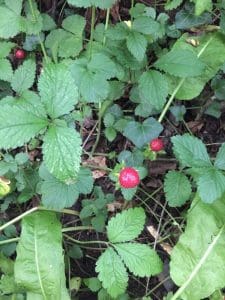
A plant that’s almost impossible to go wrong with. Look in woodlands for low lying plants with 3 lobed leaves and miniature strawberries. The wild version tends to have smaller fruits but the flavour is a lot more intense than commercially grown varieties.
Click here for the ID guide for Wild Strawberry
Dryad’s Saddle

A very beginner friendly mushroom that you’ll find them growing on dead or diseased hardwoods. When young and fresh they taste like watermelon and become more mushroomy as they age. Dryads are woodland fairies that supposedly ride these fungi and they look a bit like an old tractor seat.
Click here for the ID guide for Dryad’s Saddle.
Chanterelle
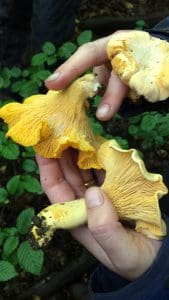
One of the world’s most famous wild mushrooms, they are a lot more common in the UK than most people think. They prefer damp, shady woodlands and have a delicious apricot scent when freshly picked. Use them fresh or dried, they are also an interesting ingredient to infuse in alcohol.
Click here for the ID guide for Chanterelle.
Bilberry
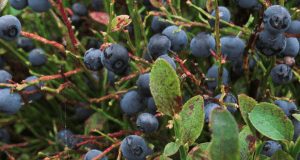
One of my favourite wild berries, think of them as our native Blueberry. Typically they are found on acidic soil at altitude growing in among the heathers. As well as being delicious they are packed full of antioxidants and vitamins.
Click here for the ID guide for Bilberry.
Meadowsweet
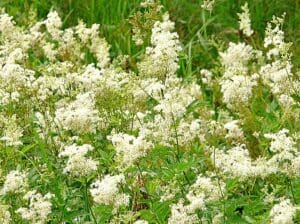
A plant that you can find most of the year but summer is when the flowers which are my favourite part are available. They have a lovely mown hay/almond flavour that works well in pannacotta, jams, wines and cordials. The plant was important in the development of Aspirin as it contains high levels of salicylic acid.
Click here for the ID guide for Meadowsweet.
For more information about foraging in July click here.
Foraging in August
Traditionally the first of August marks Lammas day which signals the start of the harvest season which is perfect for foraging in August. The Anglo-Saxon name for August was Vueod-Monath which means weed month, as this is the time when they grow most abundantly, making it a particularly good month for foraging, gathering and preserving.
Hazelnuts
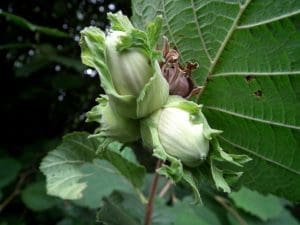
A common tree in the UK, that’s loved by foragers and squirrels alike. The nuts have to be picked slightly unripe as they will be taken by the local squirrels over wise. They can be used ‘green’ or left in a dark place for a couple of weeks to ripen.
Click here for the ID guide for Hazel.
Blackberry
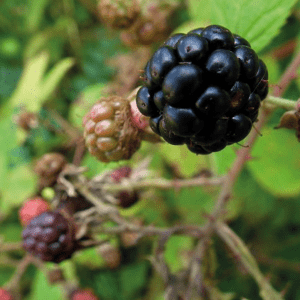
A very beginner friendly plant that most of us are familiar with. Packed full of vitamins and minerals they really are a ‘superfood’. Folklore says that blackberries should not be picked after Old Michaelmas Day (11 October) as the devil has made them unfit to eat by spitting or fouling on them, so get them while they’re still good.
Click here for the ID guide for Blackberry.
Apple

Again very beginner friendly, if it looks like an apple it’s an apple, although whether it’s one that’s sweet enough to eat straight from the tree is down to your personal taste buds. The true crab apple is getting harder to find, most you’ll come across in the wild are technically feral having grown from the discarded cores of cultivated varieties.
Click here for the ID guide for Apple.
Porcini
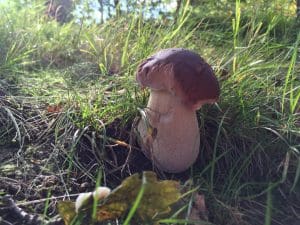
One of my favourite wild mushrooms, they tend to start fruiting in August. As well as being one of the tastiest it’s also one of the easiest to ID. Unlike many wild mushrooms they can be eaten raw or cooked and the flavour becomes even more intense when they are dried.
Click here for the ID guide for Porcini.
Sea Purslane

A lovely and common coastal plant, it’s available most of the year but in August the flowers and seeds are at their best. Add them to Asian style soups and stews for an amazing salty/umami pop of flavour. Normally found on mudflats and estuaries, there’s very little that you could confuse it with.
Click here for the ID guide for Sea Purslane
For more information about foraging in August click here.
Foraging in September
Foraging in September is brilliant, September marks the end of summer and the beginning of autumn, it’s the month for berries, nuts and seeds. The wetter weather also marks the beginning of ‘mushroom season’ and you’ll see fungi springing up almost everywhere you look.
Hawthorn berries

When we’re foraging in September I find there’s quite a few in between ingredients, they’re not quite in one stage but not quite in another, lucky for us hawthorn berries have ripened up and are ready for eating – this is towards the end of September though.
An underused berry in my opinion, they are flavoursome and packed full of goodness. Lots of guidebooks recommend waiting until after the first frost but I tend to pick them as soon as they are ripe and freeze them for a couple of days to increase their sweetness. Once defrosted they’re really versatile and can be used in sweet and savoury recipes.
Click here for the ID guide for Hawthorn.
Elderberries
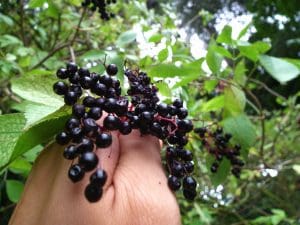
One of the most nutritious berries that we end up foraging in September, they are high in antioxidants and vitamins that boost your immune system, reduce inflammation and protect your heart, they also taste pretty good too! Use them in pies, crumble, jellies and liquors. While you’re picking them keep your eyes open for the Jelly Ear mushroom, they’re normally at their most striking now.
Click here for the ID guide for Elder.
Acorn

A lot of people are under the illusion that acorns are toxic when in fact they are an incredible, edible resource. They can be used to make flour and coffee alternatives or used as you would any other nut. They are high in tannic acid which needs to be ‘leached’ out first which is simple but can be a bit time consuming.
Click here for the ID guide for Oak.
Sweet chestnut

LIke acorns are an incredible edible nut, not to be confused with Horse Chestnut or conkers that are toxic but surprisingly can be used to make soap. Sweet chestnuts are traditionally roasted on an open fire at Christmas time but they can also be used to make flour, coffee, porridge and beer.
Click here for the ID guide for Sweet Chestnut.
Hedgehog fungus

These little mushrooms could be my all-time favourites, depending on the year we don’t always end up foraging in September for these and will find them later in the year, however, September is often a good bet for them.
I love their flavour and texture and they keep a lot longer than many other species. They are quite common in woodlands from September until November and are very beginner-friendly. The name comes from the ‘spines’ that cover the underside of the mushroom and are a key ID feature to look for.
Click here for the ID guide for Hedgehog fungus.
For more information about foraging in September click here.
Foraging in October
October is one of my favourite months to forage in, there’s fungi everywhere and it’s still mild enough for fresh greens and herbs. The weather can be really variable in October, some days it’s sunny and warm and the next day it’s an amber weather warning. The days are getting shorter and plants are getting ready for the cold months ahead.
Beech nuts
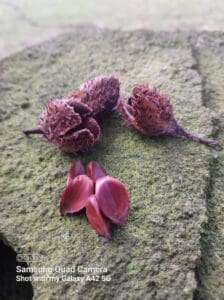
An underused nut in my opinion, they are plentiful and nutritious but can be a bit fiddly to collect and process. The nuts or ‘mast’ sometimes appear in huge quantities and can be used in a similar way as pine nuts.
Click here for the ID guide for Beech.
Rose hips

Rose hips are highly nutritious and tasty, they are particularly high in Vitamin C and played a really important role as a herbal medicine in the past. You can read more about their health benefits here. They can be eaten raw or cooked. You just need to be careful of the seeds that are covered in irritating hairs. I’d say Dog rose gives the tastiest hips but the hips of all roses are edible.
Click here for the ID guide for Dog rose
Sloes

There can’t be many people left who haven’t tried Sloe gin, it gets more and more popular each year. Sloe can also be cooked and used in crumble and pies but to be honest they are quite tart so really gin is the best use for them. They are really easy to ID, about the only things they could be confused with would be other Prunus species but they are all edible. Sloes are distinguished by the spikes on the branches and the size of the fruit.
Click here for the ID guide for Sloe.
Bay bolete
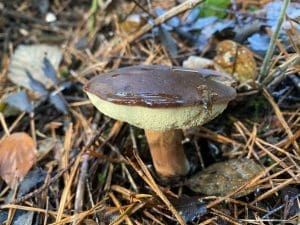
Not as highly regarded as Porcini but in my opinion just as tasty and more common. Depending on weather conditions they can appear in huge flushes. They can look similar to other boletes but if you stick to the red or blue rule they’re a really good family to explore.
Click here for the ID guide for Bay Bolete.
Shaggy Ink Cap
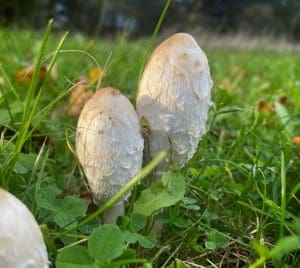
These mushrooms have quite a long season but I think that they’re most common in October.They are a general saprotrophic mushroom, feeding on dead organic material and can pop up virtually anywhere. They are pretty beginner friendly, their main lookalike is the magpie fungus.
Click here for the ID guide for Shaggy Inkcap.
For more information about foraging in October click here.
Foraging in November
Traditionally November marked the end of the harvest season and the beginning of winter, but there’s still space to head out foraging in November. It’s really the foragers last chance to collect and preserve ingredients to last throughout the winter. In some parts of the country snow will already have fallen and it’s dark by 4pm but there’s still plenty of edibles to find.
Ivy-leaved toadflax
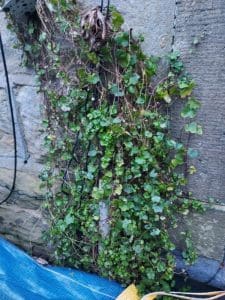
A lovely, common and easy to ID plant, you’ll find it clinging to walls and rocky outcrops. All parts of the plant are edible and if the weather is mild don’t be surprised to find it in flower, which add a mild mustard flavour to dishes.
Click here for the ID guide for Ivy-leaved toadflax.
Wood Sorrel
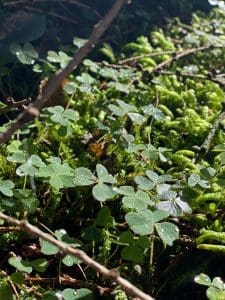
When I show this plant to people on walks it tends to be one of everyone’s favourites, the small leaves pack some serious flavour. Spring and summer is when the plant puts most of its growth but it can be found nearly all year round. It’s quite delicate so I rarely cook with it, instead add it to salads, desserts or it makes a lovely gin ingredient.
Click here for the ID guide for Wood Sorrel.
Amethyst deceiver
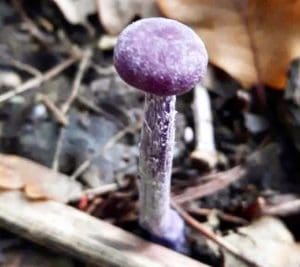
A beautiful mushroom that can be found in huge quantities, they can be used fresh, dried or are particularly good pickled. Look for them near deciduous trees, they can be quite small and tough to spot at first but once you get your eye in you’ll hopefully find many more.
Click here for the ID guide for Amethyst Deceiver.
Cowberry

Very similar to cranberries and they can be used in the same way. In Scandinavia they are called lingonberries and are stewed and served as an accompaniment to roast meats and meatballs. Look for them on mountain sides and more, quite often I find them growing alongside Bilberry. The berries can be eaten raw or cooked but avoid the leaves as they are mildly toxic.
Click here for the ID guide for Cowberry.
Winter chanterelle
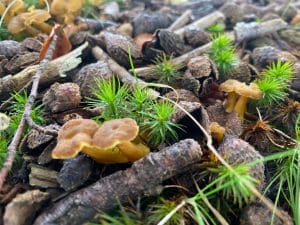
These little mushrooms can sometimes be found in huge numbers in November. They are mycorrhizal with broad leaved and conifer trees and I normally find them where the ground is damp and mossy. They can be used in a variety of recipes and have a deep earthy flavour.
Click here for the ID guide for Winter Chanterelle.
For more information about foraging in November click here.
Foraging in December
We’re all getting ready for the Christmas festivities but there’s still some space to get out foraging in December. This month also features the Winter Solstice which celebrates the shortest day and the longest night of the year. There may be less to forage but there are a few species that prefer these colder temperatures.
Turkey tail
A mushroom that can be found most of the year, they start growing in Autumn so by December they’re at their largest and best. They have quite a tough, leathery texture so they are typically not eaten as such, use them to make flavoursome and nutritious stocks and teas. They contain many compounds that boost your immune system.

Click here for the ID guide for Turkey Tail.
Velvet shank
A lovely edible mushroom that thrives in the cold weather, they are common on decaying hardwoods throughout winter. They are cultivated in Japan and are known as the Enoki, due to growing conditions these look quite different than their wild counterparts.
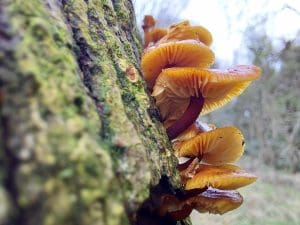
Click here for the ID guide for Velvet Shank.
Wood avens
Winter is a good time for collecting edible roots, (as long as the ground isn’t frozen solid) The roots of wood avens contain the same chemical that is found in cloves and the plant is often known by the name Clove root. I use them to make a syrup that I add to mince pies, apple crumbles and cakes.

Click here for the ID guide for Wood Avens
Garlic Mustard
Garlic mustard or Jack-by-the-hedge is a plant that survives even the toughest winter. As the name suggests it tastes somewhere between garlic and mustard and works really well in winter salads. It can also be wilted and used as a leafy green.

Click here for the ID guide for Garlic Mustard.
Pine Needles
Pine needles can be collected at any time of the year but while I’m out collecting foliage for Christmas wreaths and displays I grab a few handfuls for their medicinal qualities. They are very high in vitamin C and are good for fighting infections, coughs and sore throats as well as combating fatigue. Just leave a small handful in boiling water for 5 minutes and drink it as a tea.

Click here for the ID guide for Pine.
For more information about foraging in December click here.
Whether you’re a seasoned forager or just beginning your journey into the wild, nature offers a rich and ever-changing pantry right on your doorstep. Tuning into the rhythm of the seasons not only brings delicious rewards but deepens your connection to the land around you. So grab your basket, respect the environment, and let each month guide you to a new discovery. Happy foraging!!!



